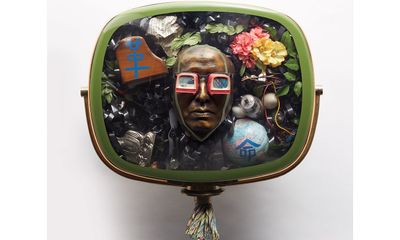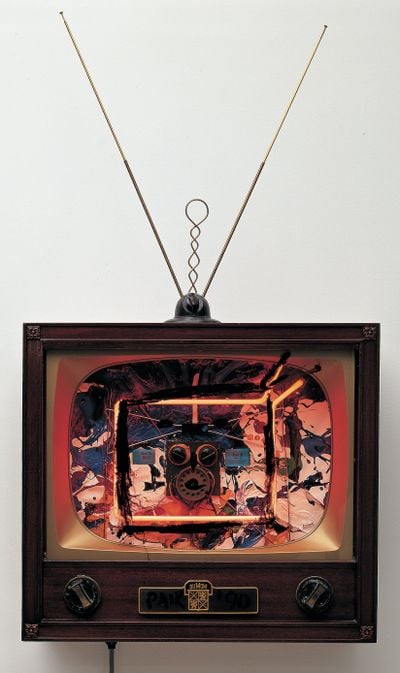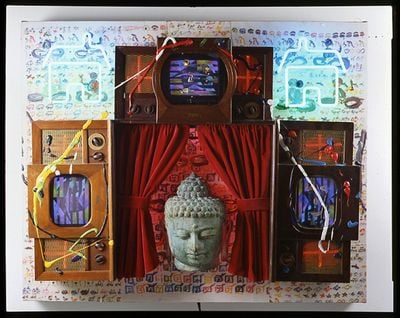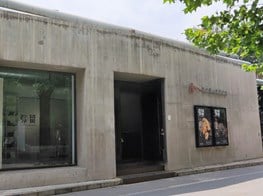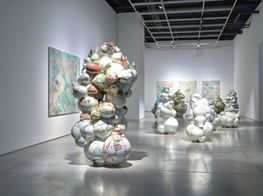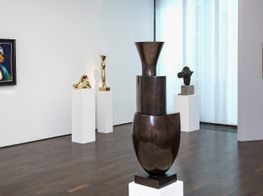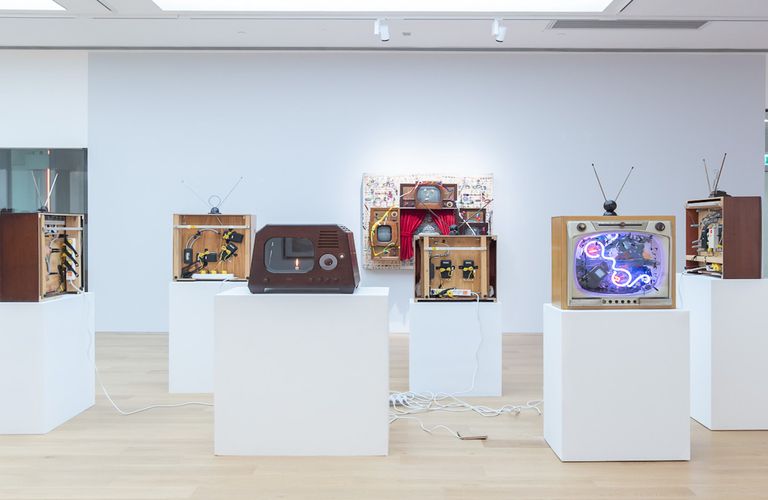
Nam June Paik's Enduring Legacy
Nam June Paik, the imitable 'father of video art', was a pioneering force in the use of visual technology as a viable artistic medium.
Closing the gulf between art and electronic devices, he worked with televisions, robots, and surveillance cameras to create multi-sensory and arresting work.
Following a major survey exhibition of Nam June Paik's work that debuted at Tate Modern in 2020 and travelled to the San Francisco Museum of Art this year, Paik's work has been in the spotlight.
Overlapping with the SFMOMA exhibition, Tang Contemporary Art present a solo exhibition that takes a similarly broad view of his career. Including television installations and lesser-known intimate crayon drawings, the exhibition establishes the diversity and ground-breaking nature of his work.
Paik's radicalism earned him renown from early in his career. Following studies at the University of Tokyo in aesthetics and relocation to Germany in 1956 where he studied music theory, Paik built a reputation as the 'Destruction Artist'.
Combining performance with composition in works such as Simple, Zen for Head and Étude Platonique No. 3 (1961), he energetically writhed around to a musical score. Paik was unpredictable yet playful and intent on the audience becoming part of his work. So much so, that at his first show Exposition of Music – Electronic Television at Galerie Parnass, Wuppertal in 1963, Joseph Beuys smashed an exhibited piano. Both members of Fluxus—an experimental collective—their friendship was informative as emphasised in Paik's tributary work Beuys Vox (1961–1988).
Artistic partnerships were significant throughout Paik's career. With his long-term collaborator, cellist Charlotte Moorman, Paik created some of his most memorable works.
The performance Opera Sextronique (1967) that had Moorman slowly strip as she played her cello was interrupted by her arrest. Unperturbed and committed to his audacious practice, Paik built a repertoire of work with Moorman. This included TV Bra for Living Sculpture (1969), a bra created from small televisions worn during a performance.
Paik was consistent in crossing thresholds. From all-compassing installations like Sistine Chapel (1993), that won the Golden Lion at Venice Biennale to sculptured such as Family of Robot (1986), comprised of vintage radios and television, his innovated engaged the art world transnationally.
He challenged disciplines, mixed mediums, and in his experimental approach was also an intellectual visionary. Paik was concerned with the productive and peaceful coexistence of humans, nature, and technology.
His intensive work informed a number of predictions Paik made about the digital transformation of human communication. He foresaw global connectivity and is attributed with coining the term 'electronic superhighway' to describe the internet age.
An NFT of the artist's video work Global Groove (Opening) (1974) was recently offered at Christie's curated NFT sale PROOF OF SOVEREIGNTY, curated by Lady PheOnix, emphasising the artist's prophetic contributions to the new media landscape.
As Arthur Solway in Frieze magazine recently described, 'an enduring legacy...influence on a generation of other video artists and multimedia practitioners to follow.' —[O]
Main image: Exhibition view: Nam June Paik, Tang Contemporary Art, Hong Kong (24 September–16 October 2021). Courtesy Tang Contemporary Art.



